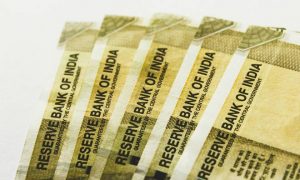Notwithstanding the global headwinds, the article said mobility is rapidly improving, the job market is recouping, and overall economic activity is on the cusp of a strengthening revival.
New Delhi: The Indian economy is on the path of a durable recovery on the back of conducive monetary and credit conditions, the global headwinds notwithstanding, said a Reserve Bank of India (RBI) article on the state of the economy.
Domestically, there have been several positives on the COVID-19 front, in terms of reduced infections and faster vaccinations, the article published in the RBI Bulletin November 2021 added.
The Indian economy, the article said, is clearly differentiating itself from the global situation, which is marred by supply disruptions, stubborn inflation and surges of infections in various parts of the world.
Notwithstanding the global headwinds, the article said mobility is rapidly improving, the job market is recouping, and overall economic activity is on the cusp of a strengthening revival.
“Overall monetary and credit conditions stay conducive for a durable economic recovery to take root,” it noted.
The global economic outlook remains clouded by uncertainty with headwinds from multiple fronts at a time when many economies are still struggling with nascent recoveries.
There is a risk of faster policy normalisation by major central banks leading to tightening of financial conditions and stifling of growth impulses, the article said.
The central bank said views expressed in this article are those of the authors and do not necessarily represent the views of the Reserve Bank of India.
On capital markets, it said the Indian equity market has outperformed major equity indices in 2021 so far.
“The spectacular gains have raised concerns over overstretched valuations with a number of global financial service firms turning cautious on Indian equities,” it said.
Traditional valuation metrics like price-to-book value ratio, price-to-earnings ratio and market capitalisation to GDP ratio stayed above their historical averages. The yield gap (difference between 10-year G-sec yield and a 12-month forward earnings yield of BSE Sensex) at 2.47 per cent has far outstripped its historical long-term average of 1.65 per cent.
Despite widespread concerns over valuations, the article said it is noteworthy that the percentage holding of private promoters in companies listed on NSE increased by nearly 50 basis points to 44.90 per cent at September-end 2021 from 44.42 per cent at June-end 2021.
“Empirical research shows a positive relationship between promoter ownership and firm value.
Steadily increasing promoters’ shareholding reflects confidence on the part of the promoters about their business prospects and comfort with ongoing valuations,” it said.
The Indian equity markets scaled record highs multiple times during the first half of October 2021, buoyed by strengthening signs of recovery in economic activity, a strong demand outlook ahead of the festive season and the Reserve Bank’s announcement of the status quo in its policy repo rate alongside continued accommodative stance of monetary policy.
The markets, however, pared some of the gains in the second half of the month amidst accelerated profit bookings following mixed second-quarter corporate earnings results and concerns over stretched valuations.
The article noted that during April-August 2021, there has been robust growth in both own tax revenue and own nontax revenue receipts of the states compared to the same period a year ago.
As the central government is comfortably placed to achieve its tax revenue collection target for 2021-22, it is expected that the higher mop-up of the central government tax revenue will translate into higher tax devolution to states in H2:2021-22, the article said.
This may cushion states’ fiscal position and conveniently place them towards achieving their budgeted fiscal deficit target, it added.
On the central government’s reduction in excise duties and a majority of the states and UTs reducing their value-added tax (VAT) on petrol and diesel, it said that overall, the decrease in motor fuel rates may positively impact consumption and private investment.
The article also said that although only 5.2 per cent of the budgeted disinvestment target of Rs 1.75 lakh crore has been achieved so far, “the sale of Air India has marked a turning point in the disinvestment programme of the government”.
It further said that the global supply disruptions weighed on the domestic automobile sector, which continues to reel under a supply shortage of semiconductor chips in October.
The supply bottlenecks thwarted festival season sales, and in sync, retail sales of motor vehicles and vehicle registrations moderated.





































